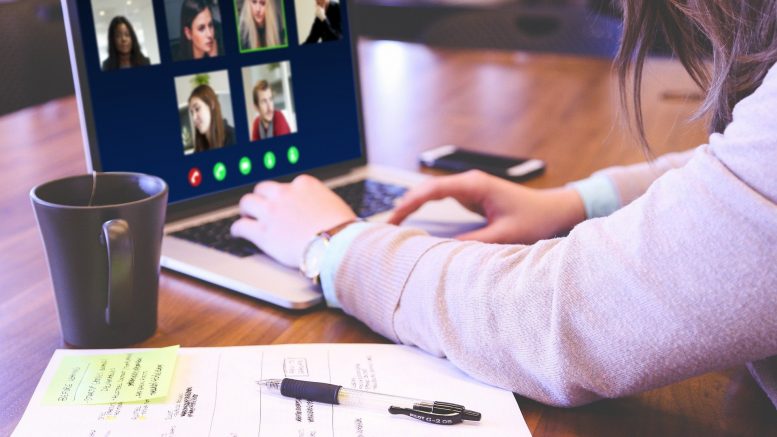During online learning, many of us have become familiar with the feeling of “Zoom fatigue,” a term we’ve been using to describe the physical and mental strain caused by video conferencing. Here are some simple yet effective ways to reduce Zoom fatigue:
- Blink! It’s that simple! When staring at screens, people tend to blink less often. This can lead to dry, irritated eyes. One easy way to remind yourself to blink is to write “Blink!” on a sticky note near your computer.
- Limit screen time. While we cannot control how much time we have to spend staring at a screen for class, we can limit our screen time outside of class. When working on homework, print out as many worksheets and readings as possible. An added bonus of printing your readings is that comprehension levels tend to be higher with paper than on a screen. Try to limit the use of other electronic devices as well. If you have an iPhone, the Screen Time section in settings can come in handy. It allows you to set limits on the time you spend in certain categories of apps on your phone, and you can schedule downtime away from your phone.
- Utilize breaks. This semester, we have been given 10-minute breaks between classes, so use this time to take care of yourself! Getting a drink, meditating, and stretching are great ways to spend this time. If it is a nice day, walk around outside your house for a few minutes. You could also walk around inside your house or up and down the stairs a few times. Doing carpal tunnel preventive stretches can also be beneficial. Carpal tunnel is pain and numbness in the hands and wrists from a pinched nerve, and it is commonly caused by excessive typing. While it is not common in teens, it can occur at any age, and taking action now can prevent future issues. Also, avoid using your phone during breaks. Limiting the use of your phone until lunchtime or after classes can help reduce further eye strain. Making the most of your breaks can leave you feeling physically and mentally refreshed and ready for your next class!
- Use blue light reducers. Blue light is a group of wavelengths in the visible light spectrum that is produced by the sun, LED lighting, fluorescent lighting, and electronic devices. Overexposure to blue light, commonly caused by overuse of electronic devices, has many effects on the body. It can cause eye strain, headaches, physical and mental fatigue, and disruption to the sleep cycle. In order to reduce your exposure to blue light, there are a few products you can use. Blue light filter glasses help to reduce the amount of blue light rays that reach your eyes. Using warm tones on your computer screen also helps reduce eye strain. You can use the Night Light setting on Windows computers, or you can download a software called f.lux for free. You can also use the Night Shift setting on Apple products.
- Avoid multitasking. While it can be tempting to check your email, text, or work on other homework during online classes, multitasking can actually make Zoom fatigue worse. Closing out of any tabs that are not related to the class you are in and setting your phone out of reach can help reduce unnecessary stimuli. Giving your full attention to the class allows you to pick up on the teacher’s verbal and nonverbal cues that make it easier for your brain to process the information, therefore decreasing your mental fatigue.






Be the first to comment on "How to Reduce Zoom Fatigue"